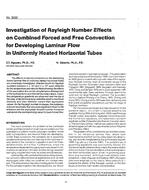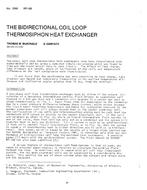Click here to purchase
Unvented roof assemblies have been accepted in North American building codes since 2007; code-compliant construction calls for a minimum thickness of“air-impermeable insulation” (based on climate zone) to avoid cold-weather condensation and moisture risks. This is typically implemented withpolyurethane spray foam insulation; however, negatives of this material include high first cost and possible adverse environmental impacts. Implementingunvented roofs in a moisture-safe manner with air-permeable fibrous fill insulations (e.g., fiberglass or cellulose) could potentially reduce the first cost ofunvented roof designs, allowing for more widespread use. Building unvented roofs in a cost-effective, airtight, and moisture-safe manner opens up optionsfor high-performance house designers and builders.This research involved construction of a conditioned test hut in a cold climate (Climate Zone 5A) with multiple side-by-side instrumented roof rafter bays.These test bays compared code-compliant construction (hybrid spray foam/cellulose) with experimental options. Examined variables included the presenceor absence of a ridge diffusion vent (vapor-open material at the roof ridge to promote drying), the effect of various interior vapor control membranes (fixedand variable permeance), the effect of interior relative humidity, and the effect of interstitial airflow (from the interior into the cavity). This researchspanned three winters’ worth of monitoring, varying interior conditions, roof configurations, and other variables between winters. At moderate (30-40%)interior RHs, the roofs with variable-perm interior vapor control and a ridge diffusion vent showed acceptable performance; other roofs had less favorableresults. At elevated interior RH (50% constant), greater moisture accumulation was seen in all roofs; disassembly revealed mold spotting at the ridges ofmost roofs. Code-compliant hybrid spray foam/cellulose roofs showed low moisture accumulation and safe performance, compared to the experimentalfibrous insulation roofs. Wintertime air injection testing demonstrated that these fibrous roofs are vulnerable to air barrier imperfections. Re-insulation ofthe roofs after finding voids during disassembly revealed greater resistance to moisture issues after “repacking” with insulation.
Citation: Thermal Buildings XIV 2019
Product Details
- Published:
- 2019
- Number of Pages:
- 10
- Units of Measure:
- Dual
- File Size:
- 1 file , 3.2 MB
- Product Code(s):
- D-Bldgs19-082


